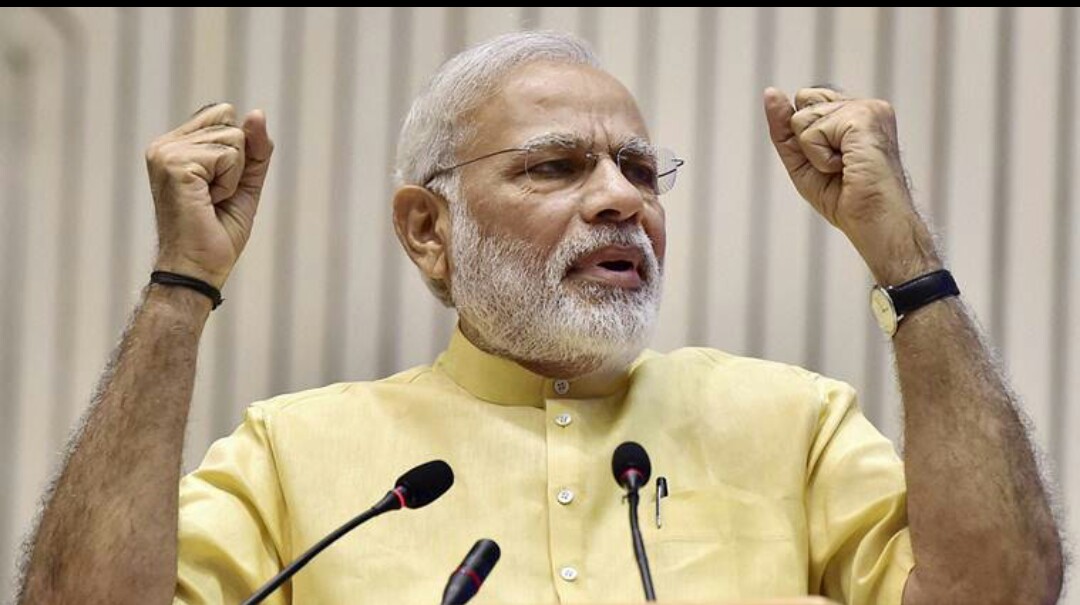PM Modi Moves Against Black Money: Four Questions

NEW DELHI: Prime Minister Narendra Modi has announced an end to Rs 500 and Rs 1000 currency notes as from midnight today. “These will just become a piece of paper from now on,” he said.
These can be deposited in banks and post offices which will then give lower currency notes to the account holders. Newly designed Rs 500 and Rs 2000 notes will be gradually introduced into the market by the Reserve Bank of India.
The move is to end black money, the Prime Minister said. This sudden announcement is expected to deal a body blow to black money operators, and demolish the parallel economy based on undeclared wealth. It should also end the fake notes that have flooded the market, with the decision to introduce newly designed notes.
It is a good move provided it the announcement is backed with the integrity of professionalism, and indeed no favourites or even the ruling party had an inkling of this move.
The basic ‘imandari ka utsav’ announced by PM Modi depends on this, so that no industrialists or political outfits were given an unfair advantage through leaked information earlier. Given the fact that elections in crucial states like Uttar Pradesh, Punjab and Gujarat are around the corner this integrity of approach is essential to ensure no political party, or industrialist, has an advantage over others kept out of the loop as it were. Black money as is well known feeds election campaigns and this will be directly impacted now.
The black money spread will definitely be reduced. In the elections as well, where black money is a major source of funding. Prashant Bhushan who has been fighting against corruption said this is a step in the right direction. He said it is not enough to deal with black money, as the bulk is lying in participatory notes, in stocks and in safe havens abroad.
It is also essential for the government now to ensure that the subsequent fall out of the announcement does not create complete chaos. Banks in India are overstretched on normal days, and with the kind of traffic this announcement will create to deposit old notes, and take out money in the new permissible denominations might create mayhem unless carefully structured and guided. Panic is a real possibility and needs to be guarded against.
Four questions thus arise, from this announcement.
One| How does the move to remove Rs. 500 and Rs. 1000 notes affect the informal sector?
The biggest question mark resulting from the announcement relates to India’s large and unregulated informal sector. The informal sector in India constitutes 93 percent of the workforce, half of which is self employed (as opposed to the formal economy that makes up only 7 percent of the workforce, only half of which is unionised. For a majority of this large workforce (which includes day labourers, factory workers employed in factories with less than 10 people, household labourer etc), earnings are in cash. For a large portion of this sector, savings too are in cash.
Additionally, many people in the informal sector do not have bank accounts. As of 2015, 233 million people in India did not have bank accounts, and more than half of all bank accounts were entirely dormant. Nearly 40 percent of new bank accounts opened between 2011 and 2015 had zero balance.
Two| Is the banking sector, that was not informed of the move, equipped to handle the sudden change?
The announcement is a major change for the banking sector, and the 45 day window given to citizens to deposit Rs. 500 and Rs. 1000 notes in their bank accounts as well as for the existing millions of people to open new bank accounts raises questions regarding the abilities and capabilities of the banking system to handle the developments.
Three, while the move hits the existing black money structure, what mechanisms are in place to ensure that a new black money structure doesn’t emerge?
The third question the announcement raises is regarding the future of the black money system in India. While the announcement will certainly hit the existing black money structure, as black money notes currently in circulation are no longer valid, what mechanisms are in place to ensure that a new system does not emerge following the change? As new notes -- Rs. 500 and Rs. 2000 -- are being introduced, what measures are in place to ensure that these notes cannot be used as “black money.”
Four| What about black money invested in gold and property?
Another question that is worth raising is how the move tackles black money in the form of gold and property, which makes up a large chunk of black money in the country.
In conclusion, it is essential for the success of this scheme to have thought the move through with measures being implemented to ensure that the new high denomination notes being issued do not feed the parallel market.



